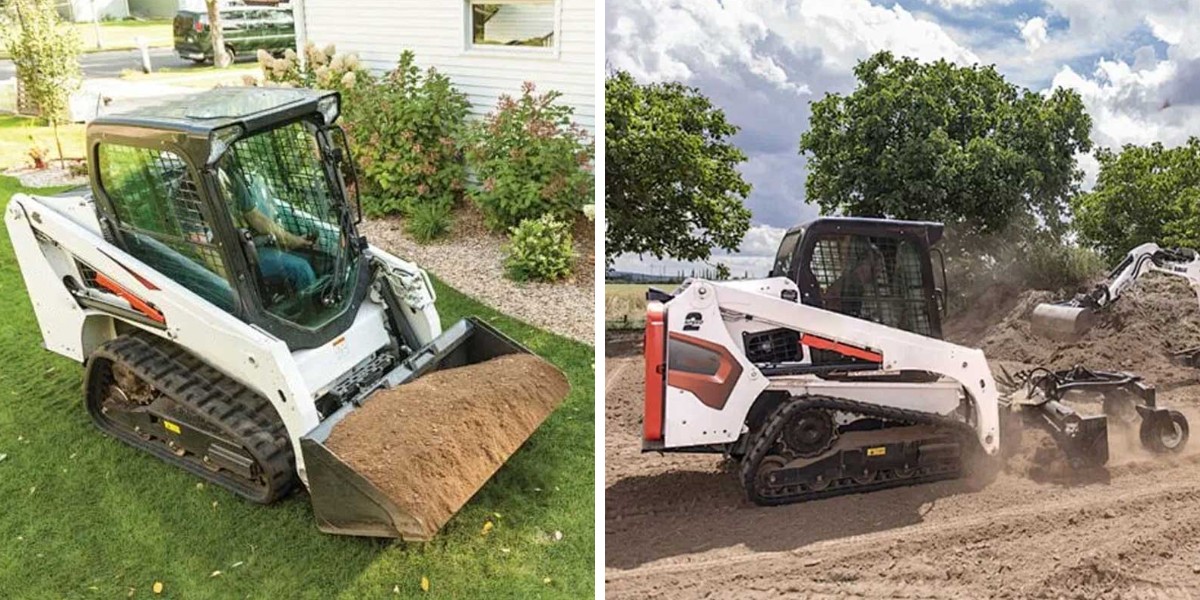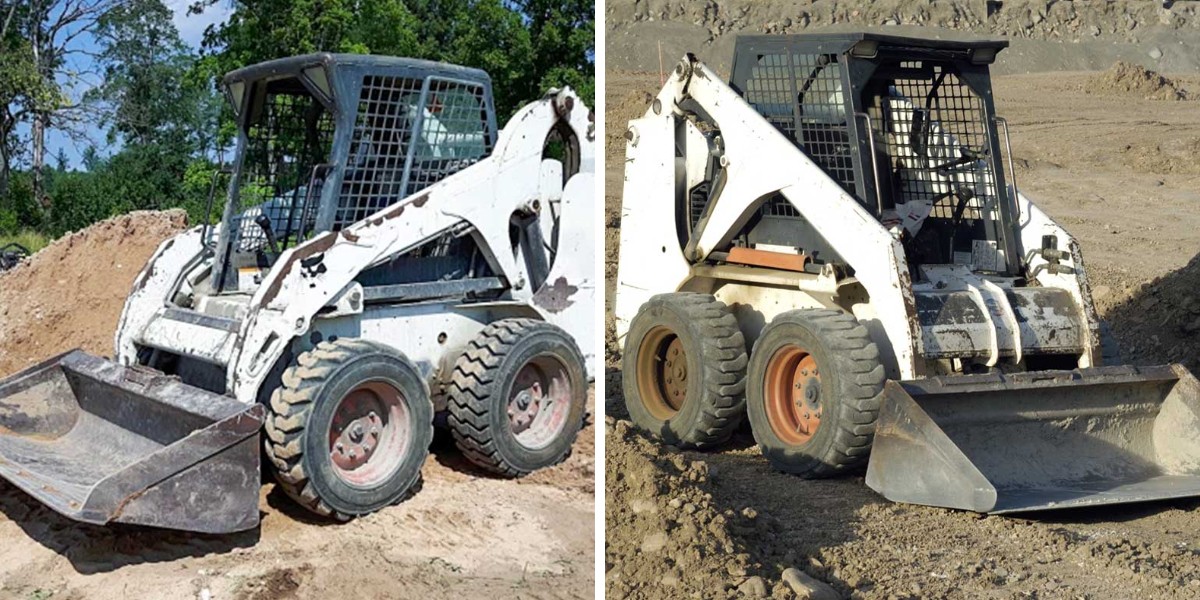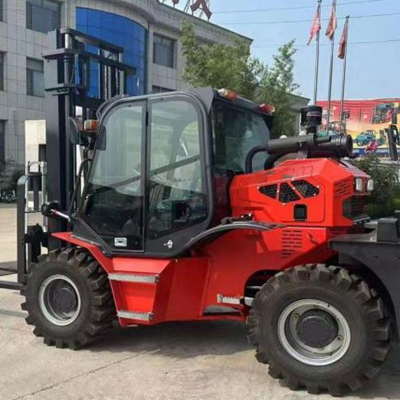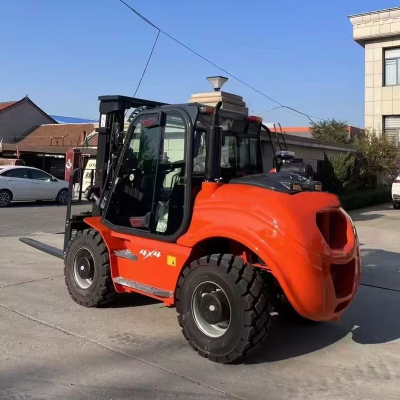Skid Steer vs Compact Track Loader: Which One Is RIGHT For Your Project?
Are you in the market for a powerful and versatile compact loader but stuck deciding between the classic skid steer loader and the modern compact track loader (CTL)? You're not alone. This is one of the most common questions we help our international customers answer.
Both machines are incredible workhorses, capable of lifting, digging, loading, and handling dozens of attachments. However, the key difference lies in their undercarriage: tires vs. tracks. This fundamental difference impacts everything from performance and application to operating cost.
As a leading skid steer loader manufacturer, we'll break down the pros, cons, and ideal use cases for each machine to help you make an informed investment.
Head-to-Head: Key Differences Between Skid Steers and Compact Track Loader
1. Undercarriage and Ground Pressure: The Core Distinction
Skid Steer Loaders: Equipped with rubber tires. They exert higher ground pressure (PSI), meaning their weight is concentrated on a smaller surface area.
Compact Track Loaders: Built with a system of rubber tracks. They distribute the machine's weight over a much larger surface area, resulting in significantly lower ground pressure.
This is the single most important factor driving your decision. Lower ground pressure translates to superior performance on soft, unstable, or sensitive surfaces
2. Traction and Stability
Skid Steers: Offer excellent traction on hard surfaces like concrete and asphalt. However, they can struggle in mud, sand, snow, or on steep slopes, where they are prone to getting stuck or sinking.
compact track loader: The tracked design provides exceptional traction and flotation in virtually all conditions. They excel in muddy construction sites, sandy areas, and snowy landscapes, maintaining stability on uneven terrain.
3. Speed and Maneuverability
Skid Steers: Are generally faster on hard, flat surfaces and can turn more quickly (true to their "skid" name), making them ideal for applications that require quick cycles on stable ground.
CTLs: Have a lower top speed but provide smoother travel over rough terrain. Their turning radius is different but still highly maneuverable in confined spaces.
4. Surface Impact and Damage
Skid Steers: The concentrated pressure and turning motion (skidding) can tear up grass, asphalt, and other finished surfaces.
CTLs: The tracks' wide, smooth distribution of weight minimizes surface damage, making them the "gentle giant" for finished landscapes, lawns, and sensitive work areas.
5. Maintenance and Operating Costs
Skid Steers: Tires are less expensive to replace but are susceptible to punctures, cuts, and wear. Maintenance is generally simpler and cheaper.
CTLs: Rubber tracks are a more significant investment to replace and require proper tensioning and care to maximize their lifespan. However, they eliminate the cost and downtime of flat tires.
Skid Steer vs Compact Track Loader: Comparison Table
Feature | Skid Steer Loader (Tires) | Compact Track Loader (Tracks) | Winner |
Ground Pressure | High PSI | Low PSI | Compact Track Loader |
Hard Surface | Excellent traction and speed | Good, but can wear tracks faster | Skid Steer |
Soft Terrain | Poor, can get stuck easily | Superior traction and flotation | Compact Track Loader |
Surface Damage | High (can tear surfaces) | Low (minimizes damage) | Compact Track Loader |
Ride Comfort | Rougher ride | Smoother ride over obstacles | Compact Track Loader |
Initial Cost | Typically Lower | Typically Higher | Skid Steer |
Operating Cost | Lower tire cost, risk of flats | Higher track replacement cost | Skid Steer |
Maintenance | Simpler (tires) | More complex (track tensioning) | Skid Steer |
Choose a compact track loader if:
You frequently work on soft, wet, or unstable terrain (e.g., mud, sand, snow, clay).
You need to protect finished surfaces like lawns, turf, or pavement.
Traction and stability on slopes and uneven ground are critical.
Operator comfort for long hours on rough sites is a priority.
Applications: Landscaping, new construction sites, agricultural work on soft fields, snow removal.
Beyond the Base Machine: The Power of Attachments
Remember, the true versatility of both skid steers and CTLs comes from their attachment capabilities. From buckets and augers to pallet forks and trenchers, the right attachment can transform your machine for any task. As a manufacturer, we offer a wide range of high-performance compatible attachments to maximize your ROI, no matter which loader you choose.
Choose a skid steer loader if:
Your work is primarily on hard, stable surfaces (e.g., concrete, asphalt, hard-packed dirt).
Budget is a primary concern, and you want a lower initial investment.
Your projects require high travel speed on flat ground.
You need to minimize long-term maintenance complexity.
Applications: Warehouse logistics, industrial settings, demolition on solid ground, farming on hard-packed soil.
Conclusion: Find Your Perfect Match with wogong
There is no one-size-fits-all answer. The best machine for you is dictated by your specific projects, terrain, and budget.
If you work on diverse and challenging terrains and value minimal surface impact, the Compact Track Loader is your champion.
If your work is mostly on hard surfaces and you prioritize cost-effectiveness and speed, the Skid Steer Loader remains an unbeatable choice.
Still not 100% sure? That's where we come in.
As a professional skid steer and compact track loader manufacturer, we don't just sell machines—we provide solutions. Contact our expert team today for a free consultation. Tell us about your projects, and we'll help you select the perfect model and configuration to maximize your productivity and profit.







